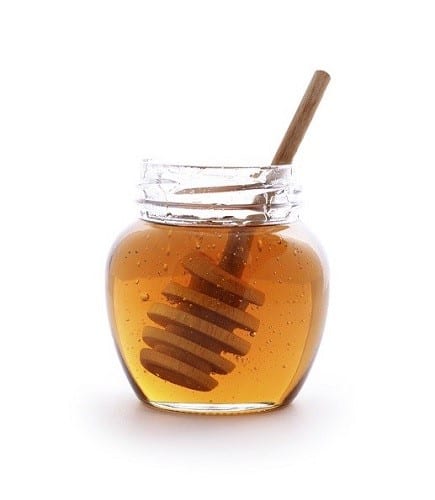 The first fact an acne sufferer should know is that honey wipes out bacteria nicely. The second fact is that its endless antioxidants, enzymes and peptides are promising for bonus powers like collagen.
The first fact an acne sufferer should know is that honey wipes out bacteria nicely. The second fact is that its endless antioxidants, enzymes and peptides are promising for bonus powers like collagen.
The third fact to know is that up to 50% of honey on grocery story shelves is fake. Last April, we did a detailed article, but honey fraud is an ever-changing world. When scientists devise a test, fraudsters crack the code within five years by inventing a new, undetectable sugar syrup.
When food authorities bust a honey fraud ring in a salty dockyard somewhere, rival fraudsters rub their hands with glee at the fresh market space. Every year, completely natural-looking brands get exposed as villains.
Therefore, here are some of the developments in fake honey since April 2019.
Fake honey in UK’s biggest supermarket
If you’re American, then you might have heard the name Tesco briefly in 2013, before its attempt to cross the Atlantic sank without a trace. Tesco has been the UK’s biggest supermarket brand for 20 years, despite Sainsbury’s’ valiant attempts to catch up.
In November 2019, the Food Standards Authority tested the popular Tesco Set Honey 454g brand, and found clear signs of non-honey sugars. Their verdict: “The findings of the analysis is that there is likely to be adulteration with non-natural products“. Before long, the National Food Crime Unit (NFCU) was investigating.
To a choir of ominous music, the FSA announced that “this could indicate a more widespread issue with adulteration of honey“. Interestingly, the FSA was alerted by a member of the public, whose taste buds we clearly need to clone.
Nobody’s saying that the crisply suited executives of Tesco hatched a plan to make an extra 200 pounds from fake honey. The UK imports 90% of all its honey supplies, so while they were undoubtedly careless, corn syrup can easily squeeze its way in via dodgy dockyards and warehouses.
The point is that Tesco Set Honey 454g is a UK bestseller, in cupboards from London to the windswept mountains of Scotland. It’s an affordable brand costing just $1.35 per jar.
Tesco initially withdrew the product, but it’s now back, and whether they reformulated it is unclear. In fact, the customer reviews have numerous people asking what the corn syrup percentage is!
Tesco maintained that their own tests were stringent and came up clear, calling it “100% pure”. It’s possible that an honest honey importer is outraged at being villainised, but it’s a lose lose scenario. If the report is right, then Tesco is accidentally selling fake honey, and if the report is wrong, then the testing methods are unreliable.
Fraud tales of old – in 2011, 11 out of 23 manuka honeys grabbed from UK shelves lacked the correct methylgyloxal levels, the antibacterial substance which is manuka honey’s signature.
Mexico – a new report
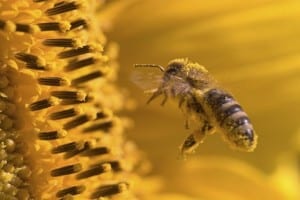 There are some remotes corners of the world where the honey may be too rich and natural. For example, in rural Ethiopia, the endless jars sitting on wooden marketplace stands still have dead bees, larvae, and honeycomb wax chunks visible inside them!
There are some remotes corners of the world where the honey may be too rich and natural. For example, in rural Ethiopia, the endless jars sitting on wooden marketplace stands still have dead bees, larvae, and honeycomb wax chunks visible inside them!
Sadly, this is not true with Mexico. In February 2020, the country’s Honey Regulatory Council announced that 80% of all commercial Mexican honey was fake. That included 100,000 tonnes of the 126,000 tonnes sold annually. Most jars were actually well-disguised mixtures of corn syrup and cane sugar, with rice, beet or potato syrup as secondary adulterants.
They unleashed the key economic facts: true honey costs 150 pesos to manufacture, while fake honey requires only a quarter of that. Most fake honey was imported, they claimed, from China, Vietnam and India.
Like Argentina, Mexico’s own farms have a reputation for high quality, but because of adulterated competition from abroad, the honey industry is losing 10.7 billion pesos yearly.
Officially, Mexico’s 42,000 beekeepers produce 57,000 tonnes of honey each year – they’re the world’s 5th biggest exporter. However, this is now falling, and Chinese fakeness is ready to fill its shoes.
According to the wise old honey council, the disguises are stealthy enough that nobody can tell the difference. Separately, the country’s Ministry of Rural Development claimed that 75% on Mexican store shelves is not the real deal.
Plus, Mexican-made honey is so outstanding that western importers lap it up, while the downtrodden locals suffer with the Chinese rubbish. They handle the real honey every day, but they don’t get to eat it!
Fraud tales of old – details are sketchy from years gone by, but in 2018, the menace of corn syrup and cane sugar had already arrived. In February 2019, the march of fake honey was being blamed for a 28 peso drop in the price of raw honey per KG in Yucatan.
Canada and its covert honey spies
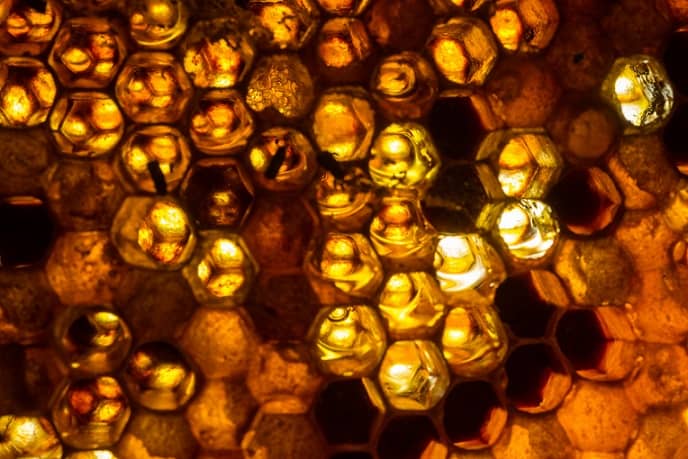 If Mexico is the fake honey badlands with fake bottles flying at you from every angle, desperate to pour themselves in your mouth, then Canada is much safer: a walk in the park with a slight chance of slipping on a banana skin.
If Mexico is the fake honey badlands with fake bottles flying at you from every angle, desperate to pour themselves in your mouth, then Canada is much safer: a walk in the park with a slight chance of slipping on a banana skin.
Nevertheless, an announcement in July 2019 by the Canadian Food Inspection Agency (CFIA) showed why no acne sufferer should relax. It was a 14 week operation, from June 2018 to September 2018, using covert honey surveillance. We don’t know what this entails, but the spies were most likely trying to hide in beehives, dressing up in grizzly bear outfits, and crouching inside steel drums in warehouses with binoculars that they forgot to clean.
More specifically, they investigated honey firms with strange trading patterns that pointed clearly towards fraud. Out of 240 jars, 21.7% failed the laboratory tests for true honey.
All Canadian-made jars were pure, but Chinese, Indian, Pakistani, Vietnamese and Greek honey showed clear signs of adulteration. The operation seized $77,000 of fake honey, weighing 12,800kg. The normal villains were detected: corn syrup, rice syrup, sugar beet, and cane sugar syrup.
Some samples were supermarket packets, while others were bulk honey awaiting further processing. They “acquired” the honey from diverse locations, including distributors, blenders, graders, retailers, and importers.
The results were much better than Mexico, but still dodgy for the average acne patient buying a random jar.
The problem is that normally, these honey spies aren’t there to save us. Like in Mexico, Ontario honey farmers are seeing their profit margins shrink; cobbling together a corn syrup recipe is far cheaper. Some Canadian farms are having to sell guided tours of the bee farm, as family days out.
It also shows how dodgy dealers from abroad are ducking under the old tests. The former gold standard was measuring C4 sugars, which come from corn syrup or barley, and never the flowers which bees pollinate (C3 sugars). 16/240 honey brands failed the C3 test. However, with the more advanced nuclear magnetic resonance test, this increased to 44/240. It’s hardly disastrous, but because NMR labs are rare, it shows how fraudsters are sneaking through. C4 sugars from corn syrup used to be a head-scratcher for them, but switching to rice syrup (which has C3 sugars) changed all that.
If you’re in Canada, your honey prospects are fairly sunny, but keep your eyes open.
European beekeepers call to arms
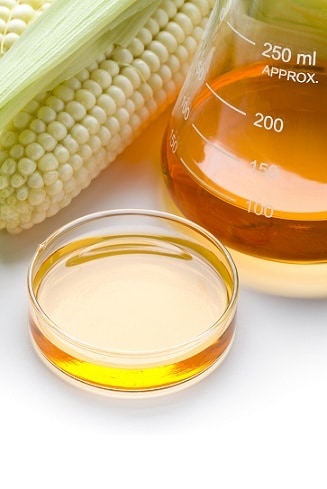 The history of European backtracking is well known. In 2001, the EU proudly announced that to help average Joes in the supermarket, all Chinese sugar must be clearly labelled.
The history of European backtracking is well known. In 2001, the EU proudly announced that to help average Joes in the supermarket, all Chinese sugar must be clearly labelled.
However, they quickly noticed a problem: 40% of EU honey was imported. Europe literally didn’t have the honeybee numbers, no matter how effectively they bossed them around, or how many special remote controllers they invented. China was unhappy, and by 2003, the country of origin requirement had been ditched.
These days, European labels must only say 1) a blend of European honeys, 2) a blend of European and non-European honeys, or 3) a blend of non-European honeys. That’s all, and in February 2020, European beekeepers finally lost patience. With COPA-COGECA, the EU’s main agricultural body, they demanded that the big chiefs in Brussels take action.
They noted that while EU honey averaged at €3.90 in 2018, Chinese product averaged at just €1.24 in 2018. They blamed the usual culprit of sleazy businessmen stirring in corn syrup, and warned that unless Chinese junk was clearly labelled, 10 million European beekeepers could fall like dominoes.
They had some great recommendations: putting horrific labels on Chinese honey like a cigarette packet, discussing its inferiority and fake additives. Another was pure logic: forcing Chinese imports into line with the strict regulations that hardworking European beekeepers already faced. Why should corrupt Chinese businessmen be exempt, they asked?
The report revealed a vital fact – European honey production plummeted in 2019, and was only compensated for by new Chinese imports.
By 2013, the EU was already importing 30,000 tons of honey from China yearly. COPA-COGECA called 2019 a “bleak year” for European beekeeping. If you’re European, then your cupboard may be 5% more likely to have fake honey.
They also proposed harder investigations on any honey shipment weighing over 30 tonnes – a prime suspect for mass-produced fakeness shoved out the door.
A surprisingly positive study
This is a weird result. In 2011, there was shock and horror as the Food Safety Network reported that 70-80% of honeys it tested from shelves, hotels and restaurants were altered.
The pollen was missing, probably from a corrupt scientist trying to disguise the origin. Some honey companies vowed to change; others vowed to sue.
Yet in February 2019, a study found that only 6.66% of supermarket US honey was fake. It was conducted by the industry-run Honey Integrity Task Force, which sounds suspicious. However, they hired an independent investigation firm from Illinois to collect the honeys, which then shipped unlabelled jars to two independent labs in Germany.
Overall, 30 honey samples were gathered, and 28 were exactly what the label stated. One fake bottle contained maltitol syrup, while another used the lazy old honey and corn syrup combo, as written in Honey Fraud For Dummies.
The honeys were sampled from big brands making up 40% of American retail honey. Their verdict: “we certainly aren’t declaring victory” but they “view it as validation that our efforts are working“.
Forgetting the reliability, does the study prove that US honey is massively safer than 9 years ago? Not necessarily, because the 30 jars could have been incredibly lucky. It does show that if fate is on your side, then you can mindlessly buy a pure brand without thinking. However, it’s odd how freakishly clean this study is.
There’s details missing too – what was the criteria for not being adulterated? Were they cheaper pasteurised honeys, or the raw ones which acne patients seek?
We’ll have to wait until the next study. Maybe we’re being too pessimistic, and things have improved.
2019 – the honey wars have begun
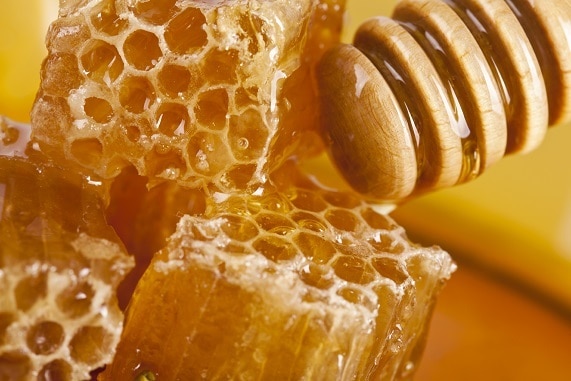 Starting in 2019, a series of US lawsuits have been filed against small and large honey dealers alike, on behalf of consumers who felt defrauded.
Starting in 2019, a series of US lawsuits have been filed against small and large honey dealers alike, on behalf of consumers who felt defrauded.
Is justice finally being served, or are lawyers just jumping on an opportunity? We make no comment here, but one “raw honey” brand had allegedly been heated to 105 degrees Fahrenheit. A Tennessee brand was allegedly imported from Vietnam in secret, while a Texan brand popular on Amazon allegedly contained sugar syrups.
One case against Kansas beekeepers was dismissed because the case was incorrectly filed in New York, while another was dismissed in February 2020 for unknown reasons, but refiled in June 2020. There’s now dozens of active cases, launched by two lawyers called Terry Buehler and Kent Heitzinger.
Therefore, a Vice News reporter decided to conduct her own experiment. She brought 4 commercial honey jars to Sweetwater labs, run by a biochemist called Jim Gawenis, a honey-analysing operation open to anyone. Even a mother of 6 worried about her son’s toast can bring her kitchen jar here.
I won’t name the exact companies, but brand A was clearly a Vietnamese import and not Tennessee’s finest, matching the lawsuit’s claims precisely. The consistency also pointed to a generous sprinkling of non-honey sugars.
Jar B was exceedingly high in hydroxymethylfurfural (HMF), the most easily detectable by-product of high heating in honey, forming from sugars during the chemical Maillard reaction. Some HMF is inevitable – tropical climates are allowed 80mg/kg while normal climates are allowed 40mg/gk – but an overload points to sneaky pasteurisation.
Brand C was a strange one. It was like contacting climbers on Everest with a fuzzy radio that keeps blinking in and out – the countries of origin were all over the place, with 5 faraway lands picked up. This pointed towards aliphatic resin abuse, which strips out foul-tasting impurities, and confuses the advanced NMR testing method. For example, it’s widely used on the notoriously disgusting Indian gum honey (“like old socks”, Gawenis said), to miraculously create a passable honey for Western taste buds. Unfortunately, aliphatic resin also strips out the healthy enzymes and compounds.
Naturally, there was one decent jar – the glorious brand D was free from adulteration and elevated HMF.
When a second lab in Germany tested them to erase all doubt, jar A’s Vietnamese origin was detected all over again – it was the same old nightmare. Likewise for brand B’s hydroxymethylfurfural, and brand A was described as “syrup with a pinch of honey”. The amino acid proline, a staple of natural honey, was nowhere to be found.
Brand C was different; this time, it had elevated hydroxymethylfurfural, but the aliphatic resin sneakiness couldn’t be confirmed. Brand D passed the test with flying colours again.
These are 4 brands – no, just 4 jars, among billions in America. But grabbing 4 random honey products off a shelf can be just as informative. It’s exactly what people do in a grocery store.
The verdict
There’s no doubt anymore – honey fraud lives on, with a slight glimmer of hope in the positive-looking US study.
We’ll be back when the next batch of studies arrive – until then, let’s pray that the boat carrying all the fake honey hits an iceberg.
Some say that fake honey lives on because consumers are secretly complicit in it. That they subconsciously crave lower prices and don’t care about the full flavour palette.
But the real problem is that corn syrup honey is everywhere, and has been for decades. Because it’s all most Westerners know, they lack the rich, flavoursome benchmark. They don’t know the power of raw honey. I’ve seen people saying they disliked “honey” throughout their entire childhood, before trying raw honey and being blown away!
Corrupt businessmen might throw their hands up in the air and say “we’re giving the people what they want!”, but deep down, it isn’t what they want. Honey is millions of years old. Cave paintings estimated at 15,000 years old were discovered in the Spider Cave (Cueva de la Arana) in Valencia, Spain back in 1921.
It has faded due to vandalism, but depicts a person climbing a thin tree with one hand holding a basket and the other hand greedily scooping honey. Even a swarm of bees circling the hive is illustrated.
Honey has existed for all the time humanity has. Archaeologists have found edible honey in Egyptians tombs – resisting a mouthful probably took all of their willpower. Honey was even the subject of the most profound Bible verse ever, from Proverbs: “If you find honey, eat just enough–too much of it, and you will vomit”.
It’s time to revive honey’s reputation. It’s time to restore honey to its rightful throne as the king of natural sweeteners.
Thanks for reading!